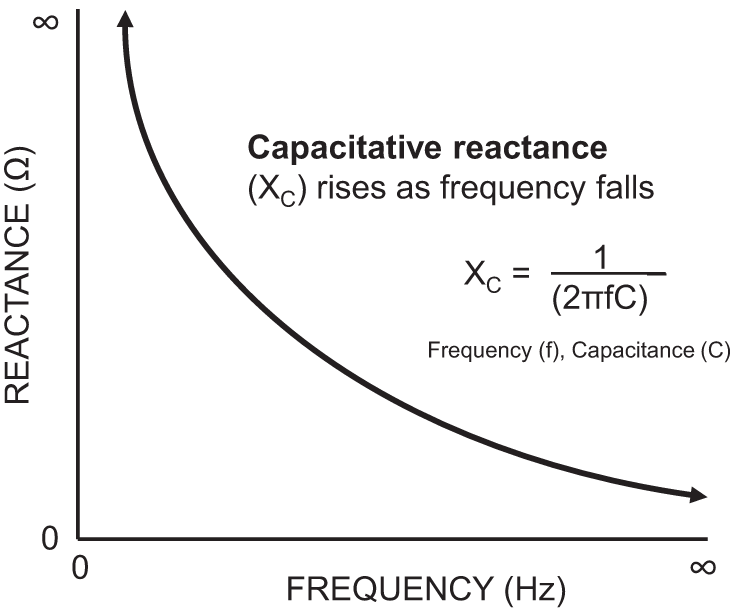Capacitors are passive components that store electrical energy. The ability of the capacitor to store charge is its capacitance and is measured in farads (F). The capacitor consists of two terminal plates separated by a non-conducting substance (dielectric). The electrical charge on either plate is proportional to the voltage across the plates of the capacitor. The charge a capacitor can store is related to the dielectric material used (dielectric constant), proportional to the size of the plates and inversely proportional to the distance between them. The way a capacitor behaves electrically is defined by the following relationship:

Capacitors placed in DC circuits create an increasing resistance to current flow. This is because the charge at the negative plate of the capacitor accumulates, until maximum capacitance is reached and current flow ceases. Capacitors in AC circuits allow current to flow, as the alternating direction of current flow prohibits a significant build up of charge on one of the plates. Reactance is the resistance to AC that a capacitor or inductor exhibits and is inversely proportional to frequency. This principle is used in filters to screen out DC currents and low frequency AC. 
 Inductors are coils of conducting wire wound around a ferrous or air core. An increasing current flowing through an inductor generates a magnetic field around it. This magnetic field in turn creates an electromagnetic force, which opposes the current flow, known as back-emf. This effect is known as inductance, and its SI unit is the henry (H). In a circuit where the rate of current change is 1 A/s, an inductance of one henry would generate one volt across the inductor.
Inductors are coils of conducting wire wound around a ferrous or air core. An increasing current flowing through an inductor generates a magnetic field around it. This magnetic field in turn creates an electromagnetic force, which opposes the current flow, known as back-emf. This effect is known as inductance, and its SI unit is the henry (H). In a circuit where the rate of current change is 1 A/s, an inductance of one henry would generate one volt across the inductor.

Stay updated, free articles. Join our Telegram channel

Full access? Get Clinical Tree





